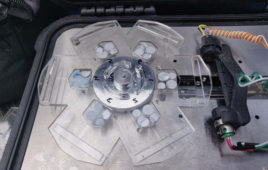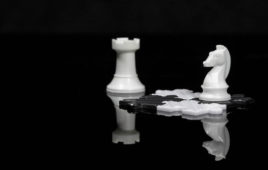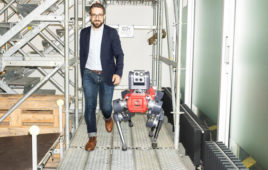More than 100 electric motors from maxon have been used on the Red Planet and have withstood cosmic radiation, dust storms, and temperature fluctuations. With the Perseverance rover, precision drives are once again flying to Mars. The key to success is the same as before: standard industrial products.
Mars missions without maxon drive systems? Unthinkable! In the last two decades, these DC motors have been used in virtually all successful robot missions. More than 100 of them are already on the Red Planet and the number will go up again once NASA’s Perseverance rover starts its work in 2021. Space missions make up only a small part of maxon’s projects, however. Most of the DC and BLDC motors, controllers, gearheads, and encoders made by the Swiss company end up in medical applications, industrial automation, or robotics.
So why is maxon such an important supplier for space projects? The short answer is because of the high quality of its standard products. All the drives that have been used on Mars are based on products from the company’s catalog, which are used on Earth in all kinds of different applications. Naturally, modifications need to be made to them so the products can withstand the harsh conditions. Nevertheless, the basic designs are the same.
Into the unknown with 11 DC motors
In 1997, for the first time in history, a vehicle roamed around on the surface of Mars, taking photos and investigating the soil. NASA’s Sojourner Rover, with six wheels and weighing just 11 kilograms, was intended at the time to be a relatively low-cost experiment.
 The choice was made to use as many standard industrial products as possible – such as the 11 DC motors used for propulsion, steering, and the operation of scientific instruments. The maxon drives, with their typical ironless rotor and rhombic winding, were more powerful and more dynamic than conventional DC motors. maxon’s engineers also modified the brushes and the lubricant. At the time, we were all unsure if the modifications would be enough for a successful Mars mission. We had no previous experience to help us and the challenges were daunting. The drives had to survive: strong vibrations during the rocket launch, vacuum and cosmic radiation during the journey, a hard landing on Mars, dust storms and temperature fluctuations from -120 to +25°C. However, the mission was a success, and maxon became world-renowned.
The choice was made to use as many standard industrial products as possible – such as the 11 DC motors used for propulsion, steering, and the operation of scientific instruments. The maxon drives, with their typical ironless rotor and rhombic winding, were more powerful and more dynamic than conventional DC motors. maxon’s engineers also modified the brushes and the lubricant. At the time, we were all unsure if the modifications would be enough for a successful Mars mission. We had no previous experience to help us and the challenges were daunting. The drives had to survive: strong vibrations during the rocket launch, vacuum and cosmic radiation during the journey, a hard landing on Mars, dust storms and temperature fluctuations from -120 to +25°C. However, the mission was a success, and maxon became world-renowned.
The urge to undertake further exploratory missions to the Red Planet grew among space agencies. They were after answers to big questions, such as: Is there water or ice on Mars? Does life exist there or could life at least have existed there earlier? And why did the planetary neighbors Earth and Mars develop in such different ways?
Filed Under: maxon Driven




